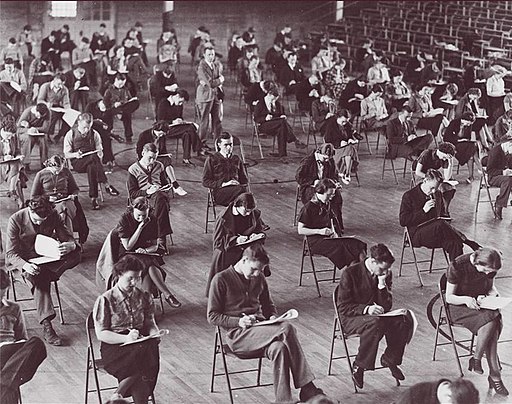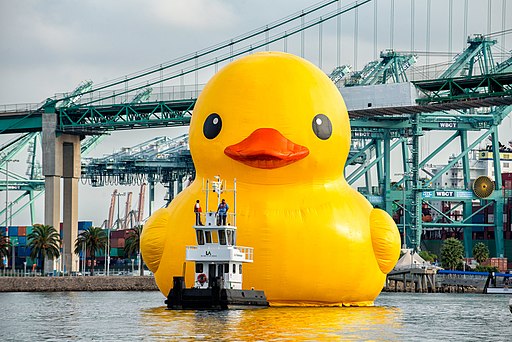10 Questions for Today’s Driver

Students at Hamline University in St. Paul, Minnesota, take final exams in the 1930s. Photo from the archives of Hamline University. Surely this driving test, which calls on knowledge affecting the safe passage of millions of people on the nations’ roads every day, can be taken as seriously.
1. The rules of the road are for –
A) Lesser mortals
B) Drivers paying attention to such things
C) Sticklers and fussbudgets
D) All of the above
2. Using your turn signal is –
A) An inconvenience because your hands are otherwise occupied
B) Unnecessary because other drivers can divine your intentions
C) For losers, not an important person like you
D) All of the above
3. Using a phone while driving is –
A) Compulsory
B) The best way to update friends and family on every detail of your life
C) A good way to multitask for a superior driver like you
D) All of the above
4. Proper procedure when merging is to –
A) Come to a complete stop and wait for clear sailing on the main thoroughfare
B) Tootle along at your own speed and trust other drivers will make way for you
C) Use the opportunity to demonstrate your aggressive driving skills
D) All of the above
5. Waiting at a red light is a good time to –
A) Become engrossed in your phone and oblivious to the light turning green
B) Fiddle with your belongings and not notice when the light turns green
C) Creep forward every few seconds because you can’t wait for the green light
D) All of the above
6. When following another vehicle, be sure to –
A) Get as close as possible no matter how fast the other vehicle is traveling
B) Tap your brakes often because you’re following too closely to slow down using the gas pedal
C) Make impatient gestures to inform the driver in front of you of your displeasure
D) All of the above
7. Staying within your lane is –
A) Not interesting because there is no element of danger
B) Hard to do when you’re texting
C) A boring way to go around blind curves
D) All of the above
8. The speed limit is a –
A) Suggestion
B) Lower limit to speed
C) Thing only for old fogies
D) All of the above
9. Continuing to drive when very old –
A) Tests your deteriorating reflexes
B) Gives your clouded judgment a workout
C) Maintains your independence at the cost of everyone’s safety
D) All of the above
10. Driving defensively is –
A) A sign of weakness
B) Something requiring more attention than you have time for
C) Hitting the brakes frequently rather than modulating speed using the gas pedal
D) All of the above
English comic actor Rowan Atkinson as the selfish Mr. Bean.
There is only one right answer to all of the above, and if you checked it off for every question then you are ready for a driverless car, and everyone else on the road is ready for you to have one, too. Congratulations! At least our good friend AI doesn’t feel it necessary to eat a burrito and text a friend about it, all while piloting one or more tons of metal hurtling down the road.
— Techly 


